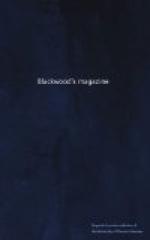[Footnote 26: The real friend of collegiate discipline, whose feelings our author would blush to offend, will be pleased to recollect that this deviation from the usual dinner hour took place in the long vacation; that it was introduced for the convenience of study, and that the doctor, could he so far have forgotten his dignity as to have joined the four o’clock party, would have found decorous manners, and more than one brother fellow of the company.]
[Footnote 27: Wisely was it ordained by our founders, that, young men being too apt to laugh in their sleeves at the conduct of their superiors, the academical dress of the under-graduates should, as far as possible, obviate that inconvenience. Thus, also, Tully hath it, “Cedant arma togae.”]
[Footnote 28: The two founders of Brazenose College.]
[Footnote 29: It is necessary to explain to non-academic readers, that it is customary for the tutor of a college to put an X opposite the name of an offending member in the Buttery Book, as it is called, by which he is interdicted from having bread buttered, a kind of excommunication.]
[Footnote 30: For the meaning of this expression we refer the reader to the most preposterous imposition ever known in the annals of collegiate punishment; the original MS. of which is preserved in the museum of an eminent collector in Kent. In short, as in Cambridge they sell their butter by the yard, so at Brazenose the cloth measure has been applied with singular success to the works of genius; and perhaps the system may be so far improved upon, that a future under-graduate may have to toil through a furlong of Strabo, or a perch of logic.]
[Footnote 31: This alludes to the hobbling gait of the Doctor, in consequence of the defect in his foot.]
[Footnote 32: The Rev. B——d P——t.]
[Footnote 33: Alluding to a notorious malefactor, executed about this times and hung in chains on Wimbledon Common.]
[Footnote 34: Prophetically spoken, as the Doctor was then only a junior fellow.]
[Footnote 35: The Doctor, finding that Horace prescribed a nine years’ delay for play or poem, inferred that more than twice that time was necessary for the learned labours of the editor of Strabo.]
[Footnote 36: For the wonderful answers of the learned cuckoo, at logic lecture, we refer to his (the cuckoo’s) equally edified class-fellows.]
[Footnote 37: The reader will perhaps be astonished to find, that the Doctor as supposed to flatter himself with the hope that his attentions were not altogether unacceptable to a young lady of singular elegance and personal accomplishments, here alluded to.]
[Footnote 38: “Obscoenaeque volucres signa dabant.”]
[Footnote 39: The poet invokes his heroi-comic predecessors, the author of the Lutrin, and Alessandro Tassoni, whose Secchia Rapita, or Rape of the Bucket, is well known to the amateurs of Italian poetry.]




